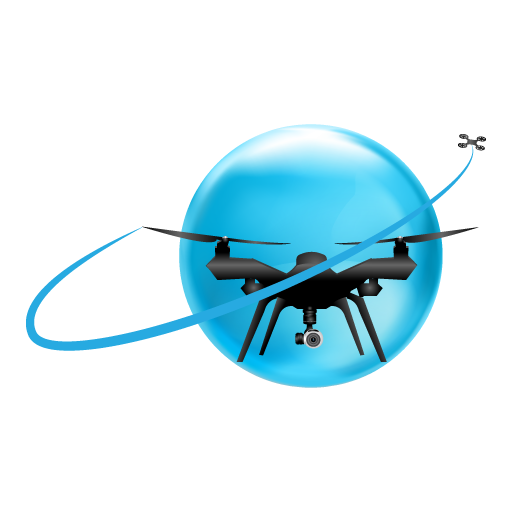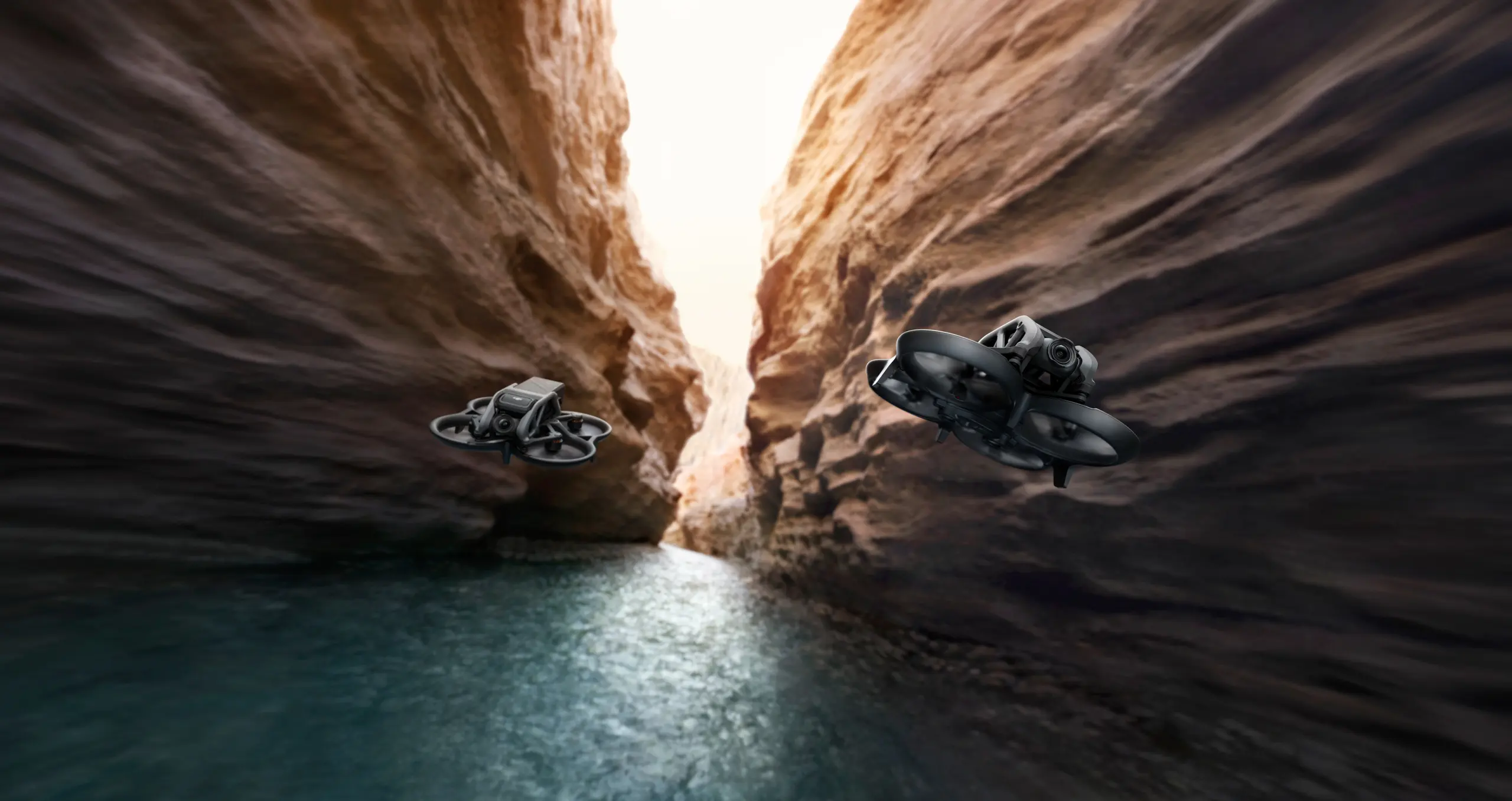In this DJI Avata vs. Mini 3 Pro guide review, we will help you to pick the best choice from the two latest DJI drones, which have the best design-specification-price and much more for your particular needs. And once this review is completed, you will be in the direction of conclusion that which one is the best.
The DJI Avata and Mini 3 Pros are the latest in the DJI series. A few months ago, we compared the DJI Mini 3 Pro vs the DJI Air 2S; check out the article to see who came out on top. These are the drones that most people are looking for. They are the crucial choice that needs to be made by any potential drone user. So without wasting any further time. Let’s move to the review.
DJI Avata vs Mini 3 Pro in a Glance

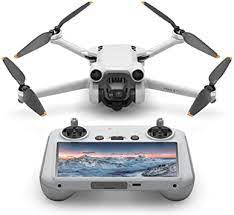
The DJI Avata is the first cine-wood style drone and the second product in the FPV series. It is packed with many features, attractive designs, and specifications that any consumer has ever dreamt of. One of the most attractive features of DJI Avata is that it is maneuvered to perform aerobatic moves like flips and rolls while capturing eye-catching views. Not just this, it is donned with 2 face-mounted displays, DJI Goggles 2, which make the operator right into the action.
Whereas DJI Mini 3 Pro belongs to the miniseries of DJI but is combined with the latest technology. The camera installed in this product usually comes with heavier series of DJI. This is one of the top reasons it contains the name “pro” with it, “high-quality image with heavier features than before.” Not just this, but it is also the first time that DJI is allowing users to choose between two controller modes in miniseries.
DJI Avata vs Mini 3 Pro Pros
In the comparison between these products, the pros and cones that you may experience are:
|
DJI Avata |
Mini 3 Pro |
|
Protective frame design. |
An intelligent battery is available. |
|
Can record steady videos. |
An upgraded camera is present. |
|
Manual options are available. |
Flight time is above 30 minutes. |
|
More robust battery timing. |
Upward angle rotation is available. |
|
Easy to operate for beginners as well. |
Lightweight as well as compact size. |
DJI Avata vs Mini 3 Pro Cons:
The cons can be expressed as follows:
|
DJI Avata |
Mini 3 Pro |
|
No carrying bag is available in the box. |
Limited internal storage. |
|
The motion controller is limited to a speed. |
Smart flights do not support vertical videos. |
|
Under 400m, video can be dropped. |
High price. |
|
On warm days the goggles can mist up. |
Obstacle avoidance is not good enough on the sides. |
|
No sensors on forwarding collision. |
|
DJI Avata vs Mini 3 Pro Design
The DJI Avata is more modern than the conventional designs of FPV drones. The whoop shape with propellers is firmly surrounded by guards, attracting market enthusiasts. However, high-quality cameras are also needed to attach with it to get high-end footage. The drone size isn’t tiny, and the frames are robust. In short, we can say that building quality is the principal collision tool that is provided here.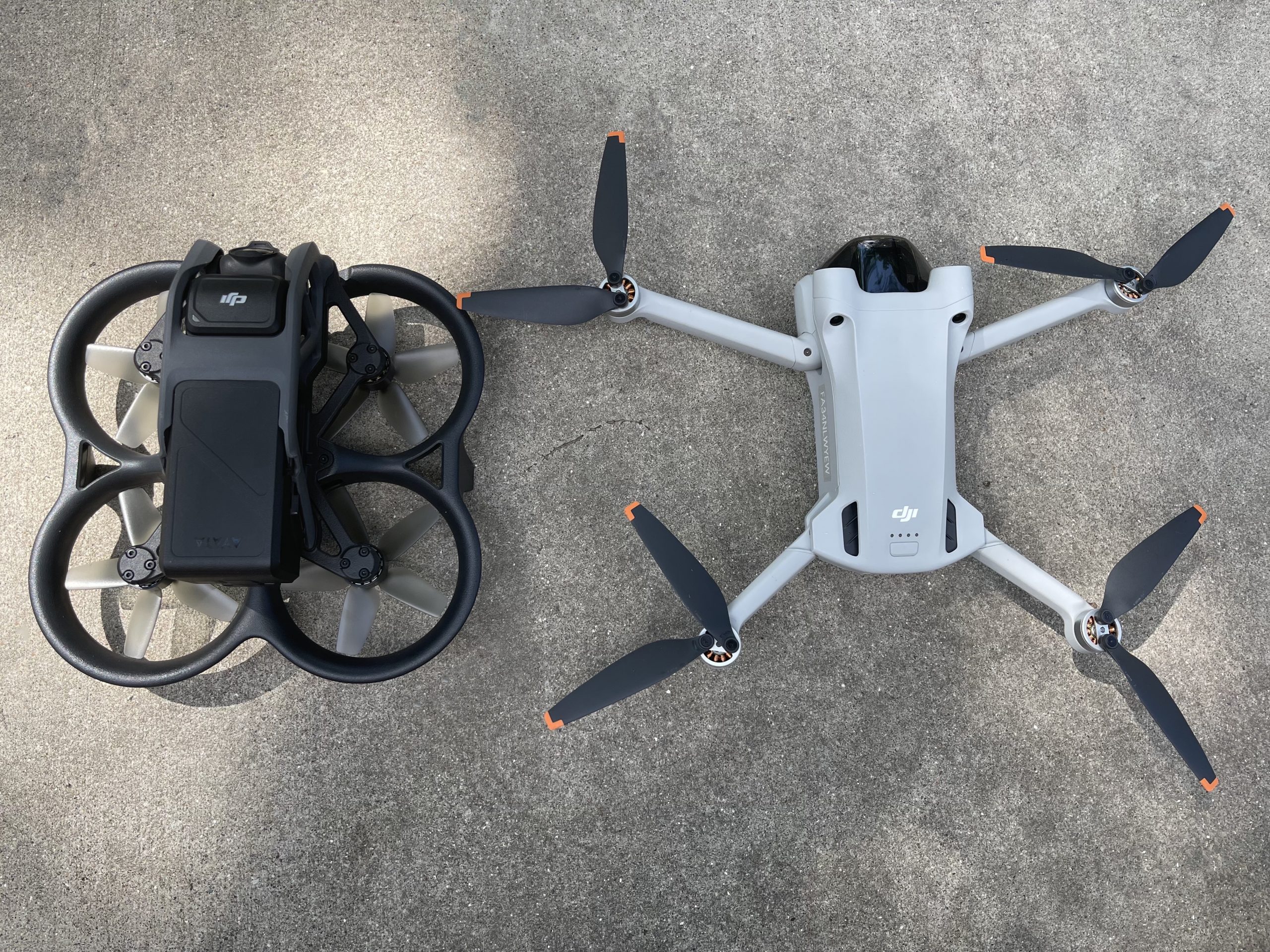
At the front, the camera lens is on a single axis with a gimbaled frame which appears to be roll-bars. Underneath are ToF and sensors, but no forward vision sensor is present. The propellers, as well as the propeller guards, are replaceable. The tilting gimbal is mounted on the core body ( the non-replaceable part). The battery is enclosed in a frame and usually works for up to 18 minutes.
The design of the props of DJI Avata is with narrow clearance and precision, which boosts efficiency. However, the frame also acts as a duct around the props. But DJI didn’t place foam around the frame as some frames do.
The DJI Avata has a tucked USB-C socket and an SD card under a rubber cover on the same heights of blades. However you have to swap the card often, but keeping the card in place is also an advantage.
Whereas DJI mini 3 pro designs are just like any other drone from DJI, the difference is that it is a shrunken version of them. It shares the same dark grey propellers, an off-white body, and another color scheme. But one thing that is different here is that you don’t have to fold them in the specific conventional method. One common thing with the previous generations of DJI mini products is that they still lack spring-mounted propellers, and to replace them, you have to use a screwdriver. One advantage here is that you won’t face any issues if the drone experiences any collision with the trees.
The distinguishing feature of the DJI mini 3 pro drone design is its weight. Many countries allowed flying drones less than 250g, and DJI managed it to be less than it. Except for it, whenever the drone is folded, it appears to be the size of a smartphone and stands almost 2.5 inches.
The DJI mini 3 pros controller is larger and more cumbersome than the drone. The DJI offers choices between two controllers in this product. The classic option is the RC-N1, and the brand new option is the DJI RC.
|
|
DJI Avata |
DJI Mini 3 Pro |
|
Take-off weight |
Approx. 410 g |
<249 g |
|
dimension |
180×180×80 mm |
171×245×62 mm |
|
Folded size |
180×180×80 mm |
145×90×62 mm |
|
sensors |
1/1.7-inch CMOS
|
1/1.3-inch CMOS
|
Flight and Stability
The flight experience with DJI Avata was very fine. While flying it, we managed not to crash it into any obstacle; the collision sensor kicked in and saved us from the damage. However, we try to fly it as fast as we can. The gimbal at first didn’t like it much, but it appeared to be okay when we turned it off after the flight.
After that, we also tested the motion controller bundle. At first, it appears to be off-putting, but soon, it becomes second nature. Usually, the drone has three-speed modes, but in the floating handle controller, only two modes were available, i.e., normal (8m/s) and sports(18m/s). However, when you use a PlayStation-based FPV controller, you will realize the third manual mode (27m/s). However, we find sport mode a little disappointing, but it is very similar to high speed to most of the DJI’s Mavic 3, which was 19m/s.
The DJI Avata does very well on the low ground, where the big drones cannot fly tight. Thus it makes the high speed more exciting. You just have to hit the brake button, which will stop to a hover.
While flying it, the satellite plays a significant part, but the magic cast by the sensor is unmatchable. When you are within 20 meters, the vision sensor track and the ToF sensor track the height within 10cm.
The manual flight mode of DJI Avata also allows the enthusiast to try acro mode. In this mode, one can perform stunts like flips.
On the other hand, the Mini 3 Pro design is safer and optimized for forwarding motion than the other members of the family. Except for this, it also flies like any other Mavic drone. In short, we can say that all the drones here are safe and pretty attractive to fly.
However, the high wind is more likely to push it around as it does to any other drone. But it’s exceptionally lightweight, making it more susceptible to gusts. The DJI tried to compensate for this issue with the built-in gimbal, but still, you need a heavier drone to work with heavy wind. Except for this, if winds pick up after you have taken off, the heavy motors and redesigned body of mini 3 seem to make it more capable of holding itself than the previous models.
Moreover, if we talk about flight stability concerning the sensors, there is a drawback as substantial obstacle avoidance is missing in it. It has sensors to detect from the front, back, bottom and rear. The latter, which I didn’t find satisfactory. Except for this, the sensors have a sizeable peripheral view, but the sides still have a blind spot that won’t protect you.
DJI Avata vs DJI Mini 3 Pro Battery
The battery of DJI Avata is of 4500mAh and is 14.8V. It works very well and can be used for a heavy flying session. The battery time is 18 minutes in ideal conditions, but it is 10 to 12 minutes in real life. The DJI Avata is similar to the Mavic mini battery but is 50mAh extra.
The DJI mini 3 pros’ battery is 4500mAh and is 14.8V. The battery is high quality and can give you a good flying session. Its battery time is 18 minutes in ideal conditions and 10 to 12 minutes in real life.
DJI Avata vs DJI Mini 3 Pro Camera and Gimbal
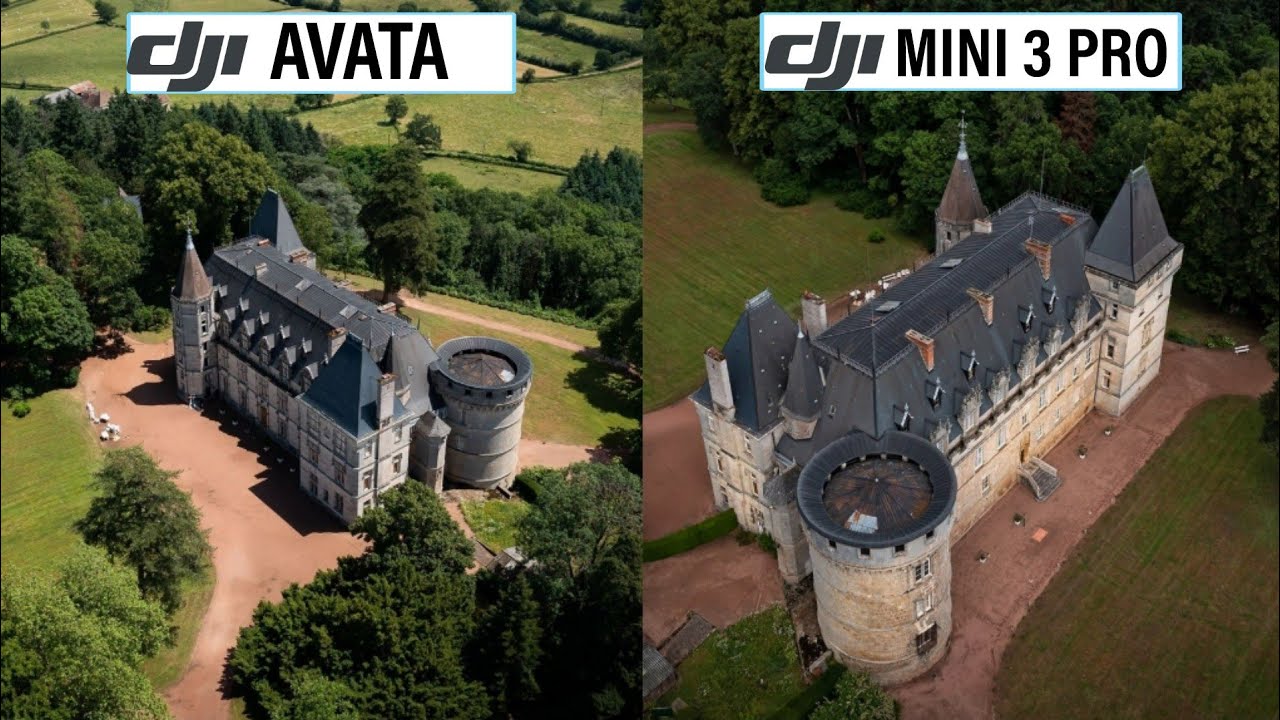
The cine-wood style of DJI Avata enables it to capture cinematic videos. It is done with the help of 4K video at up to 60p and a maximum bitrate of 100Mbps. The image sensor is 1/1.7″, capable of recording 10-bit 4:2:2 D-LOG footage. The image sensor is also four times bigger than the Mavic mini. It is an excellent advantage as it can record 4K video with better low-light performance.
The mechanical shutter of DJI Avata is present to avoid rolling shutter distortion. It has a maximum of 1/8000s shutter speed. The gimbal is on 3-axis with a damping ball used to reduce the vibration and give smooth footage. The gimbal is also caged with a plastic guard to make it more durable.
The CineCore 2.1 image processing system of DJI Avata is used to record 4K video at up to 60p. The video is recorded with a maximum bitrate of 100Mbps in the MP4/MOV (h.264/h.265). The CineCore 2.1 system is also used for advanced image processing and supports the ProRes and CinemaDNG codecs.
The DJI Avata is also capable of recording 10-bit 4:2:2 D-LOG footage. The DJI Avata has a maximum flight time of 18 minutes. The battery is of 4500mAh and is enclosed in a plastic frame. The battery is also replaceable and is available on the market.
The DJI mini 3 pro also has a suitable image sensor that is 1/3.3″. The image sensor is also 12MP. The video resolution is 4K, and the video bitrate is 100Mbps. The video is recorded in the MP4/MOV (h.264/h.265) format. The image sensor is also capable of recording 10-bit 4:2:2 D-LOG footage. The 3-axis DJI mini 3 pros gimbal is also caged with a plastic guard.
The gimbal is also excellent, reduces vibration, and gives smooth footage. The gimbal is also used for advanced image processing and supports the ProRes and CinemaDNG codecs.
The DJI Mini 3 Pro has a maximum flight time of 30 minutes. The battery is of 4500mAh and is enclosed in a plastic frame. The battery is also replaceable and is available on the market.
Which drone should you buy?
The DJI Avata is an excellent choice if you are looking for a drone with a modern design, robust build quality, and a variety of features that make it easy to operate. However, it is more expensive than the DJI Mini 3 Pro, and the lack of forwarding collision sensors may be a deal-breaker for some users.
The DJI Mini 3 Pro is an excellent choice if you are looking for a lightweight and compact drone yet still offers a high-quality camera and a variety of intelligent flight modes. However, the lack of side obstacle avoidance sensors may be a deal-breaker for some users.
Conclusion
From the review of DJI Avata vs. Mini 3 Pro, it is clear that both products are excellent in their ways. The DJI Avata is a perfect choice for those looking for a drone with a modern design, robust build quality, and a variety of features that make it easy to operate. However, it is more expensive than the DJI Mini 3 Pro. The Mini 3 is an excellent choice for a lightweight and compact drone, yet it still offers a high-quality camera and a variety of intelligent flight modes.
Contents
